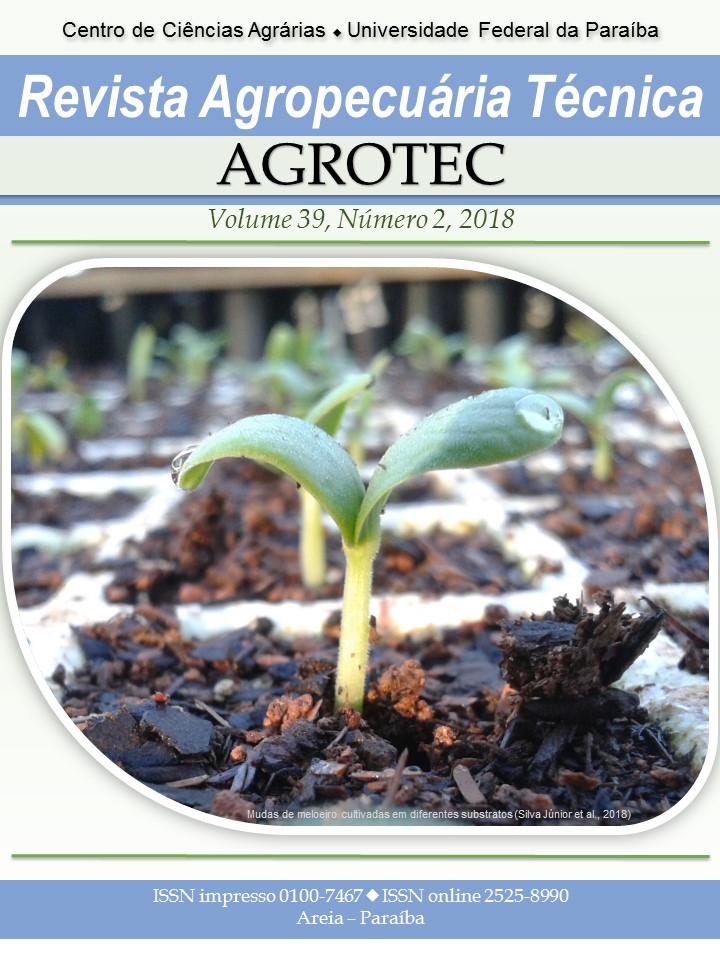Initial growth of Nopalea cochenilliferain function of cladode fractionation
DOI:
https://doi.org/10.25066/agrotec.v39i2.37995Keywords:
Cactus forage, Forage, SemiaridAbstract
The cactus forageis an important forage resource of the semi-arid region of Brazil, however, the dissemination of the carmine cochineal (Dactylopius opuntiaeCockerell) has become a limiting factor for the cultivation of this forage. In this context, the identification of methods of clonal multiplication of cactus forage, resistant to this pest, becomes necessary, since it can reduce the seasonality of forage productionin this region. Thus,the aim was to evaluate the initial growth of fractioned cladodes according to the type of segmentation of cladode. There were used young plants of cactusforageresistant to carmine cochineal (Dactylopius opuntiaeCockerell), obtained from the fractionation of cladode technique in different sizes (entire cladode, ½ cladode in a vertical cut, ½ cladode in a horizontal cut, ¼ of cladode and fractionation of the cladode 6 x 4 cm). A substrate contained 1:1 of soil and dairy manure were used for planting the cladodes. The young plants were evaluated weekly, starting 30 days after the planting (DAP) and ending 93 DAP. There were used a completely randomized design with 20 replications per treatment. We evaluated length, width, thethickness of cladode, sprouting and mortality rate, and the number of cladodes. The young plants from ½ cladodes with vertical cut exhibited the largest length, width, thickness of cladode between the types of segmentation of cladode studied. The cladode fractionation technique for multiplication of the cactusforage(Nopalea cochenilliferacultivar Doce Gigante) is a feasible technique that could be applied when the aim is a fast production of plants.


